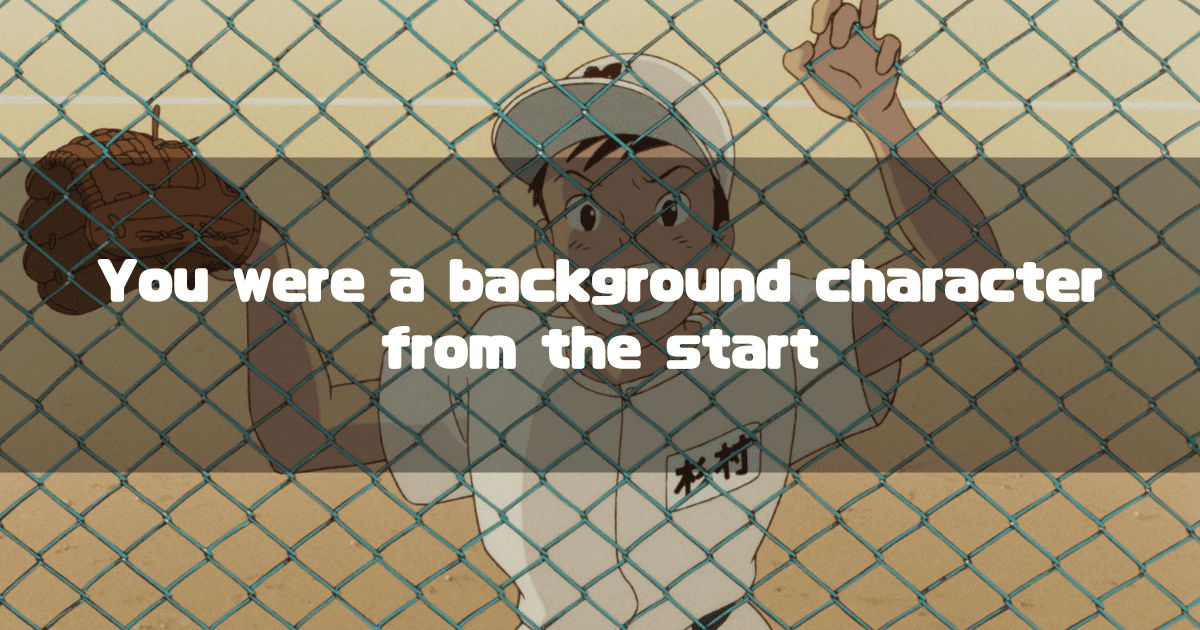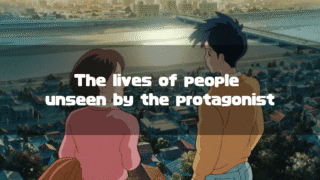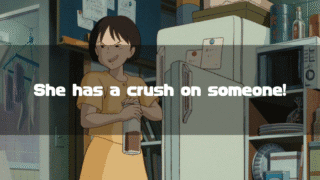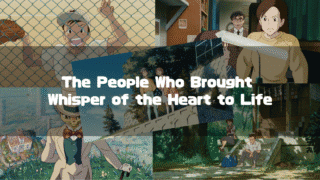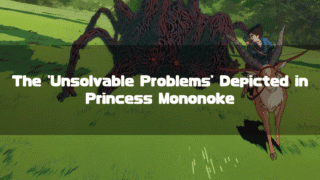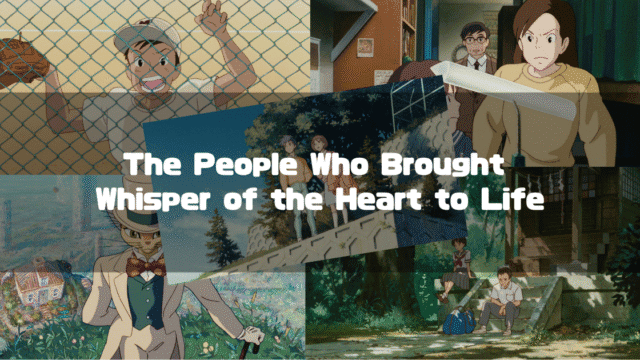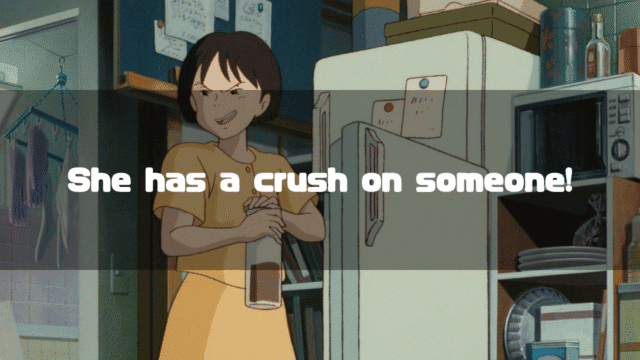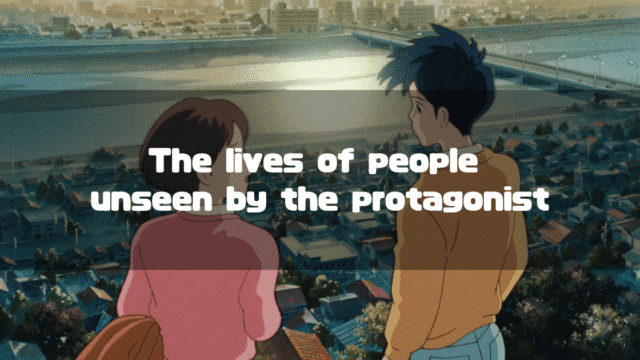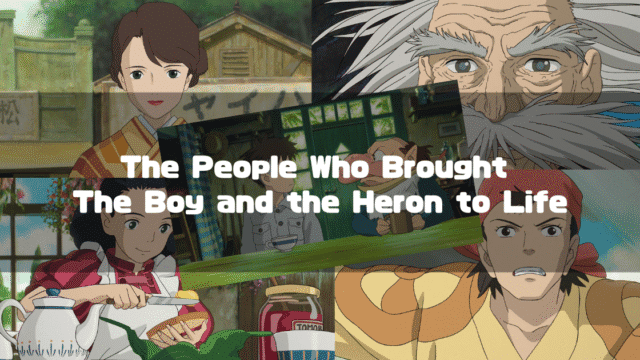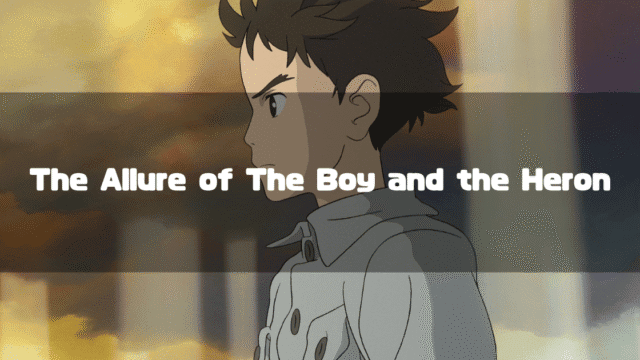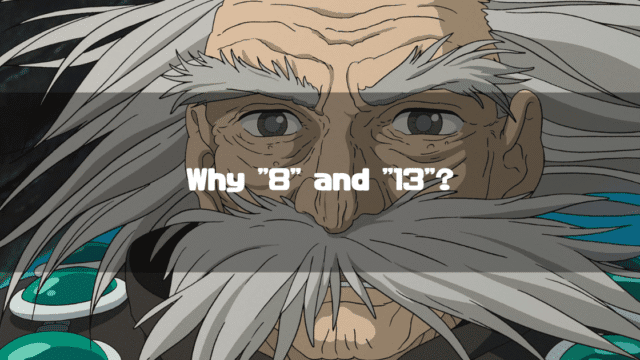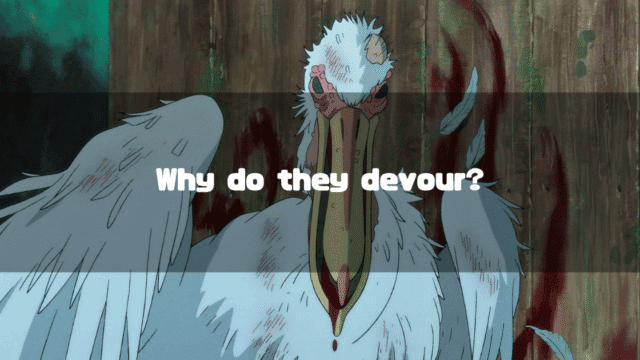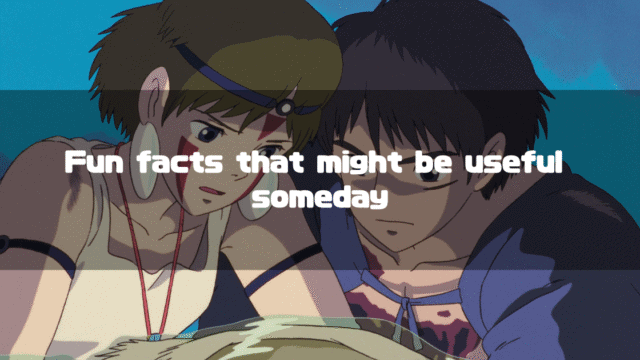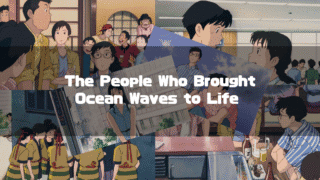Whisper of the Heart(Studio Ghibli Official) is a 1995 animated feature film directed by Yoshifumi Kondo. When the movie was released, I was still in elementary school, but I just couldn’t get interested in it, and I never ended up going to see it in theaters.
Years later, when I found out that On Your Mark was screened alongside it, I was filled with immense regret. I want to punch my past self.
Whisper of the Heart, the object of such remorse, has now become a film I dearly love. I no longer remember when I first saw it, but I’d like to reflect on why I came to love the film Whisper of the Heart.
First, I want to focus on our beloved side character, Sugimura. He’s the fool who, despite having a female classmate who has feelings for him, confessed to Shizuku Tsukishima and was gloriously shot down. But I just can’t look away from him.
It might be because I also played third base on the baseball team in junior high, but more than that, I believe Sugimura’s existence is a fundamental part of the work that is Whisper of the Heart. Let’s explore this idea bit by bit.
*This article is an English translation of the original Japanese article, 【耳をすませば】悲劇の男「杉村」を追う!.
Let an AI walk you through the highlights of this post in a simple, conversational style.
- Whisper of the Heart is a story from Shizuku Tsukishima’s subjective perspective.
Through alterations to the library card details and the portrayal of Sugimura, the entire work is shown to be narrated through a “shojo manga-like subjective view.” - Sugimura is an “unimportant being” to Shizuku.
Contradictions in the baseball depiction, like being a left-handed third baseman, and changes in his sports bag, express Sugimura as a character outside Shizuku’s sphere of interest. - The audience is also drawn into “Shizuku’s subjective view.”
The audience, failing to notice the subtle changes in Sugimura, follows the story while ignoring “Sugimura’s emotional state,” just like Shizuku. - The reason Sugimura “lost” to Seiji.
While Seiji took an interest in Shizuku and devoured books at the library, Sugimura did not understand what Shizuku liked and was in a narcissistic kind of love. This difference is the cause of Sugimura’s “defeat.”
The Existence of Sugimura in Whisper of the Heart
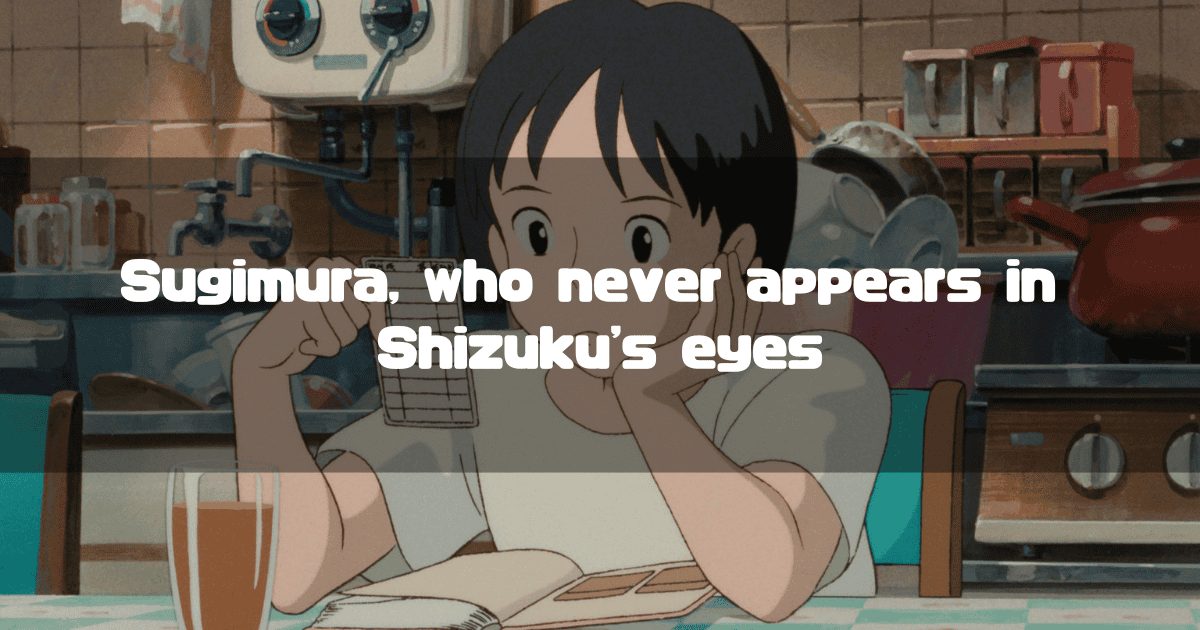
As you can see from reading Ghibli Textbook 9: Whisper of the Heart (ジブリの教科書9:耳をすませば, in Japanese), one of the key questions behind the production of Whisper of the Heart was, “What does it mean to adapt a ‘shojo manga’ into a film?” This kind of creative concern is extremely difficult for us on the “receiving end” to grasp.
Shojo manga (少女漫画) is a category of Japanese comics created mainly for a young female audience, typically teenagers. The stories often focus on romance, relationships, and the emotional growth of the protagonist. A key feature is the strong emphasis on the characters’ inner thoughts and feelings, which are often expressed through a distinctive art style with large, expressive eyes and symbolic backgrounds like flowers or sparkles.
After all, anime based on shojo manga already existed, and they had been adapted into films before. However, for visual creators, especially film directors, the meaning of the word “film adaptation” is likely completely different from ours. But I think it’s important not to just end with “I don’t understand,” but to think about it for myself.
My own thought is that one of the key issues was “adapting” the “extreme subjectivity” inherent in “shojo manga” into a “film.” I will proceed with this line of thought. “Extreme subjectivity” refers to those “flowers that appear around a character.” When a being who is “overwhelmingly significant” in some way to the protagonist appears, flowers bloom around that character. The important point is the existence of “characters around whom flowers do not appear.” This is a brutally harsh thing, representing the decisive separation between “what matters and what doesn’t” according to the protagonist’s subjective view. Now, how did Whisper of the Heart achieve this?
The Story of Shizuku Tsukishima’s “Subjectivity”
Shortly after the movie begins, there is the following scene where Shizuku Tsukishima looks at a library checkout card.
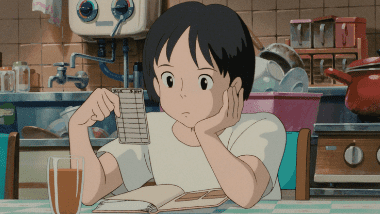
Here, she discovers the name Seiji Amasawa. The card is for a book called The Adventures of Usagi-go, and at this point, Seiji Amasawa’s name is on the first line, showing he borrowed it on June 28th and returned it on July 5th.
Remembering she had seen the same name on other checkout cards, Shizuku returns to her room to check the cards from other books. There, the checkout cards for Battle of Fire, Luu of the Lizard Forest (5), and The Adventures of Usagi-go are shown in a close-up, side-by-side. What’s noteworthy is Luu of the Lizard Forest (5). When it was first shown, Seiji Amasawa’s name was on the second line, and it shows he borrowed it on June 28th and returned it on July 5th (meaning he borrowed it at the same time as The Adventures of Usagi-go). However, the next time it’s shown, his name has moved to the fourth line, and the dates have changed to being borrowed on July 26th and returned on July 28th.
An animation error? No way. This was undoubtedly intentional. In this scene, Whisper of the Heart is making a declaration: “This work is ‘a story from Shizuku Tsukishima’s subjective perspective’.” In other words, at that moment, the only thing important to Shizuku Tsukishima is the “name” Seiji Amasawa, and all other information is “unimportant.” To cast aside such “unimportant things” is the essence of “shojo manga,” and the film is telling us, “This is the path we’re taking.”
Sugimura, the “Unimportant Being” to Shizuku Tsukishima
Now, after making its “declaration” using the “checkout card,” the film immediately puts that “declaration” into practice. That happens in the following scene.
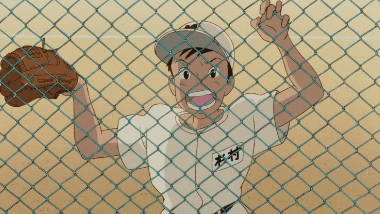
Anyone who knows even a little about baseball should feel a tremendous sense of unease in this scene. Sugimura’s jersey number is “5.” This means he plays third base. However, he is wearing his glove on his right hand. This means Sugimura is left-handed (the dominant hand is used for throwing the ball).
For those who don’t know baseball, this might not click, but a left-handed player playing third base is impossible. The most important thing when playing the infield is the “throw to first base.” Since first base is to the batter’s left, if a left-handed person plays the infield, they have to twist their body to throw to first. This takes up time, so normally, the infield is played by right-handers. So why did this happen?
An animation error? No way. Of course, it’s possible he just has the number 5 and happens to be playing a different position. But rest assured, the storyboard also says “Number 5, Third Baseman” (I bought the storyboard just to confirm this fact). It’s impossible that the creators, in a country where baseball was once the most dominant sport, lacked this knowledge, and everyone knows which hand Shigeo Nagashima wore his glove on (or at least someone does).
Ultimately, this scene represents ‘Sugimura’ as seen by Shizuku Tsukishima. In other words, Shizuku thinks, “‘Sugimura’ is my friend, but I have no interest in this sport he plays called ‘baseball,’ and it’s completely ‘unimportant’ to me.” This single scene expresses that Sugimura will never be surrounded by flowers.
Incidentally, this is not Sugimura’s first appearance. He appears from behind just before this scene. At that time, Sugimura is wearing his glove on his left hand. Sugimura is, after all, right-handed. It’s also interesting that the father of Shizuku’s friend Yuko, with whom she is “fighting,” is watching baseball on TV. In every way, Sugimura is an unimportant being.
Of course, it’s structurally obvious that Sugimura has a crush on Shizuku, and there’s an unsettling atmosphere from the beginning. The important thing is not that it’s “structurally” so, but that it is done as a “visual expression.” This, I believe, is one aspect of what it means to “adapt” a “shojo manga” into a “film.”
Well, the conclusion of this article has basically been reached, but there’s a little more I want to talk about. I once searched for “hints” in the work to determine Sugimura’s dominant hand. There are actually several scenes that could potentially identify it.
Sugimura’s Sports Bag
After Sugimura’s first appearance, there are at least four scenes that could hint at his dominant hand. The first is on a rainy morning during the exam period when Shizuku calls out to Sugimura. Sugimura is holding his school bag (for textbooks, etc.) in his left hand and an umbrella in his right. It’s generally assumed that one holds an umbrella with their dominant hand, so this scene also suggests Sugimura is right-handed.
The next is during an exam. Here, Sugimura is holding a pen with his right hand. Of course, this alone doesn’t determine his dominant hand, as some people write with their right hand only. However, another incident occurs in a later scene, just before the “confession scene.”
Sugimura approaches Shizuku on her way home, holding a large sports bag, presumably with his baseball gear, in his left hand. Why is Sugimura, who is carrying nothing else, holding the bag with his left hand? The answer is simple, isn’t it? At this moment, Sugimura is inside “Shizuku Tsukishima’s subjective view” and has not become an objective being. Therefore, it has become a case of “which hand he was holding the bag with is unimportant.” Then, after being rejected by Shizuku, Sugimura walks away holding the bag with his right hand (at this time, the camera is filming both of them, so it is not “Shizuku’s subjective view”).
And then, there’s another scene where Shizuku and Sugimura are running side-by-side in the rain, late for school, holding umbrellas. This time, Sugimura is holding a large bag in his right hand and an umbrella in his left. Since he’s holding the heavy item in his right hand, Sugimura’s dominant hand is indeed right.
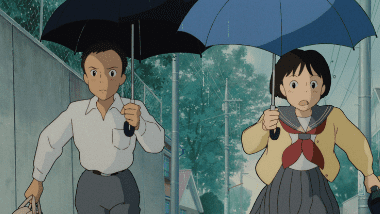
But at this point, his dominant hand is no longer the important thing. The sports bag Sugimura is carrying now is different from the one he had before; it’s much smaller. To begin with, how many people even noticed the change in the bag?
After being rejected by Shizuku, Sugimura must have felt the need for a “fresh start” and changed his sports bag. You don’t notice these things at all on the first viewing. But because Whisper of the Heart is so cleverly crafted as “a story from Shizuku’s subjective view,” we, the audience, just like Shizuku, share “Shizuku’s subjective view” by completely ignoring “‘Sugimura’s change’.”
By the way, the reason Sugimura’s sports bag is smaller is that his “feelings for Shizuku” are gone. Sugimura has put down his “heavy burden.” That’s why the bag is smaller.
Conclusion on Sugimura
To summarize what I’ve said so far, it would be as follows:
If the problem in “adapting” a “shojo manga” into a “film” was the “extreme ‘subjectivity'” of “shojo manga,” then the character of Sugimura must have been a symbol of an “unimportant being” to Shizuku. Therefore, Sugimura within “Shizuku’s subjective view” is depicted strangely, such as “playing third base with a glove on his right hand.” The amazing thing about Whisper of the Heart is that by cleverly depicting this “Shizuku’s subjective view,” it guides the audience into that “subjectivity.” We were brilliantly “played.”
I think that’s how it is.
This time I focused on the existence of Sugimura, but next time I’d like to think more about Whisper of the Heart as “the story of Seiji Amasawa and Shizuku Tsukishima.”
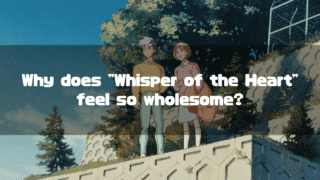
Appendix: Why did Sugimura lose to Seiji Amasawa?
In the main body of this article, I wrote “The Story of Sugimura,” but I think it’s also a little interesting to consider why Sugimura lost to Seiji Amasawa.
In the film Whisper of the Heart, the “strategy to win the girl he fell for” that Seiji Amasawa employed was one that a normal person couldn’t conceive of. That is, “If you fall for a girl, read books.” Noticing that Shizuku was a bookworm, Seiji Amasawa holed up in the library and devoured books. It seems he was even nearby at times without her noticing.
There are some who ridicule Seiji Amasawa for doing this, calling him a “stalker,” but the fundamental point is that “Seiji’s interest was directed at Shizuku, while ‘Sugimura’s’ interest was directed at himself.” Sugimura probably doesn’t know a single book that Shizuku has read. But he “likes” her. It’s only natural that his feelings, based fundamentally on self-love, did not bear fruit.
Of course, the strategy Seiji Amasawa took can probably be justified because he’s a junior high school student; if an older person were to imitate it, they would truly be a pervert. However, “being interested in the other person” is an essentially important thing, and it might have been “a matter of course” that Seiji Amasawa, who realized this, was victorious over Sugimura.
The images used in this article are from Studio Ghibli Still Images.
About the Author
Recent Posts
- 2025-10-21
Indiana Jones and the Dial of Destiny(2023): Full Synopsis & Analysis: Indy’s True Motive and the Enigma of Helena - 2025-10-15
Indiana Jones and the Dial of Destiny(2023):Historical Background-WWII, the Real Dr. Schmidt, the Siege of Syracuse, and the Antikythera Mechanism - 2025-10-08
Why Does Children Who Chase Lost Voices Feel So Ghibli-esque? [Makoto Shinkai’s “Tale of Farewell”] - 2025-10-07
5 Centimeters per Second: Characters, Voice Actors, Character Analysis and Character Map - 2025-10-06
5 Centimeters per Second: Full Synopsis, Analysis, Ending Explained & Character Map (Spoilers)

